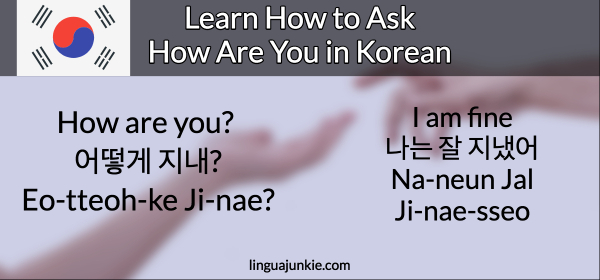how to say you in korean formal How to say you're welcome in korean formal
In today’s globalized world, communication is more important than ever. Whether it’s for business or personal reasons, understanding different languages can open up new opportunities and enhance connections with people from different backgrounds. One such language that is gaining popularity is Korean. With a rich cultural heritage, a booming economy, and an increasing global presence, learning Korean can be a valuable asset. One of the first things you should learn when starting to learn Korean is how to say “thank you”. In Korea, showing appreciation is an integral part of their culture, and knowing how to say thank you can help you build strong relationships and show respect to the people you interact with. The most common way to say thank you in Korean is 감사합니다 (gamsahamnida), which can be used in both formal and informal situations. In informal situations, you can also use 고마워 (gomawo). Another important phrase to learn in Korean is “you’re welcome”. When someone thanks you, it’s polite to respond with “you’re welcome” to show that you appreciate their gratitude. In Korean, there are a few different ways to say “you’re welcome”, depending on the level of formality required. One of the most common ways to say “you’re welcome” in a formal setting is 천만에요 (cheonmaneyo). For informal situations, you can use the phrase 아니에요 (anieyo) or 괜찮아요 (gwaenchana). Learning Korean might seem daunting at first, but there are plenty of resources available to help you get started. There are many online courses and language apps that can help you learn Korean at your own pace, as well as language schools and tutors if you prefer more personalized instruction. Korean dramas, movies, and music can also be effective ways to immerse yourself in the language and pick up new vocabulary and expressions. No matter which method you choose, the key to success in learning Korean is consistency and practice. Try to devote a set amount of time each day to studying and practicing speaking, listening, reading, and writing in Korean. As you progress, you can also try to find language exchange partners to practice with, both online and in person. In conclusion, learning how to say “thank you” and “you’re welcome” in Korean can be a valuable skill in today’s globalized world. By showing appreciation and respect in Korean, you can build stronger relationships and connect with people from different backgrounds. With the right resources and a dedication to learning, anyone can master the Korean language and unlock new opportunities and experiences.
If you are looking for How to Say Thank You in Korean | Korean words, Korean language, Korean you’ve visit to the right page. We have 5 Images about How to Say Thank You in Korean | Korean words, Korean language, Korean like How to Say Thank You in Korean | Korean words, Korean language, Korean, How To Say You’re Welcome In Korean Formal - Leah Beachum’s Template and also How To Say You’re Welcome In Korean Formal - Leah Beachum’s Template. Read more:
How To Say Thank You In Korean | Korean Words, Korean Language, Korean
 www.pinterest.com.mxkoreanische koreanisch worte sprache domandhyo koreanisches sprachenlernen südkorea grammatik wörter hyo informal
www.pinterest.com.mxkoreanische koreanisch worte sprache domandhyo koreanisches sprachenlernen südkorea grammatik wörter hyo informal
How To Say You’re Welcome In Korean Formal - Leah Beachum’s Template
 lindeleafeanor.blogspot.comformal noona kimbapnoona
lindeleafeanor.blogspot.comformal noona kimbapnoona
How To Say You’re Welcome In Korean Formal - Leah Beachum’s Template
 lindeleafeanor.blogspot.comphrases
lindeleafeanor.blogspot.comphrases
How To Say “How Are You?” In Korean And How To Answer - LearnKorean24
 learnkorean24.comkorean say formal polite way answer
learnkorean24.comkorean say formal polite way answer
How To Say My Name Is In Korean Formal
 thebtutor.blogspot.comphrases linguajunkie
thebtutor.blogspot.comphrases linguajunkie
Korean say formal polite way answer. How to say my name is in korean formal. How to say you’re welcome in korean formal